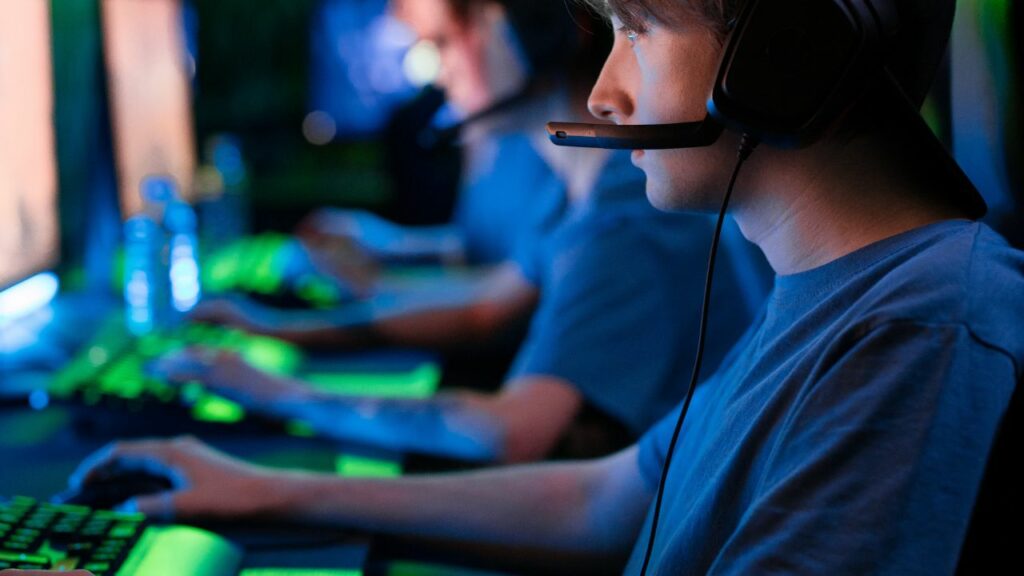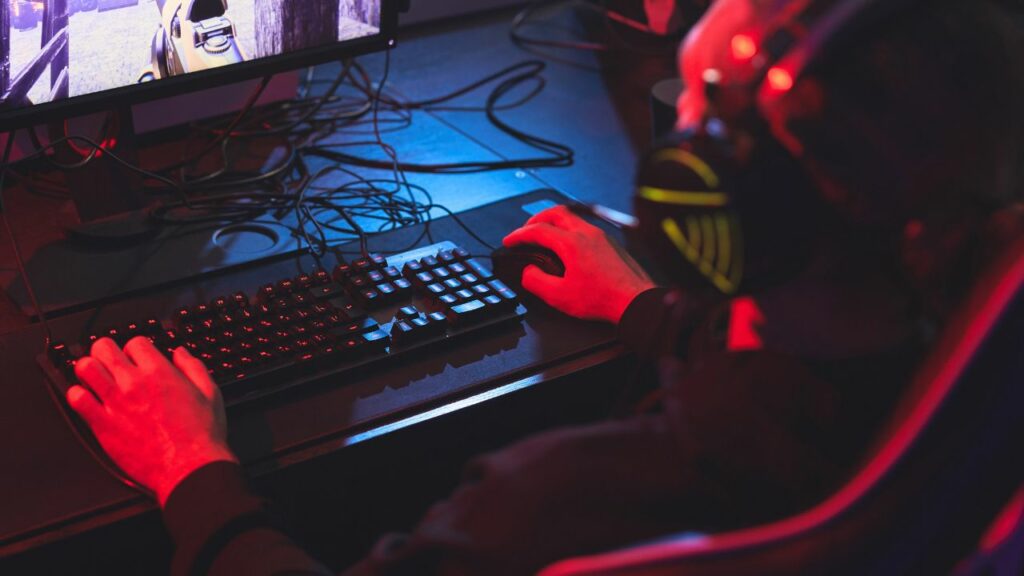
If you are an avid gamer, chances are you’ve debated the merits of different keyboard switches. They’re the unsung heroes in our epic battles, our frenzied raids, and our calculated strategies. Yet the question often arises – are tactile switches good for gaming? To answer this, let’s delve deep into the world of tactile switches and explore the nuances that can either enhance or inhibit your gaming performance.
Understanding Tactile Switches
The keyboards we all love have one of three types of switches beneath the keys: linear, tactile, and clicky. Tactile switches are well-loved by typists for the tangible feedback they provide, letting you know that your keystroke is registered. This tactile bump can be beneficial for those prone to typos, as it serves as an immediate notification of the keystroke registration. However, the question remains: are they suitable for gaming?
To decipher this, we must factor in certain elements such as resistance ratings, travel distance, and personal predilections. The resistance of the switch defines the pressure needed to activate the key, while the travel distance relates to the depth a key must descend before it registers. These aspects can greatly influence the gaming experience, though often uniquely for each gamer. Keep in mind, the color of the switch isn’t always a trustworthy way to ascertain its type.
Are Tactile Switches Good for Gaming?
Now, let’s jump into the gaming arena. Gamers often favor linear switches over tactile ones. With linear switches, such as red, black, and yellow, there is a smooth, bump-free feel throughout each keystroke. They provide a clean and consistent actuation, which is typically the preference of those playing fast-paced, reaction-heavy games. In contrast, tactile switches can interfere with this smooth actuation due to the feedback bump, which can potentially affect response times.
While they might not be the best for rapid keystrokes, tactile switches could have an edge in strategic or role-playing games where every keypress is more deliberate. Considered the best tactile keyboard switches, they do offer unique benefits, including feedback that can help you avoid accidental keystrokes.
The Loudness Factor
Another factor to consider is the noise level. Linear switches are generally noiseless, which is a bonus for night owls who enjoy late-night gaming sessions without disturbing others. Tactile switches can be slightly louder due to the tactile bump, but whether this is a problem depends on your gaming environment. Are you alone or sharing a space? Are you wearing headphones? Is your microphone picking up keyboard noises while chatting with your teammates? For more about the noise level of tactile switches, you can read here.
Gaming Performance Comparison: Tactile vs. Linear vs. Clicky Switches

When assessing performance in the gaming sphere, it’s important to understand the distinct characteristics of tactile, linear, and clicky switches.
Linear switches, like red, black, or yellow, are often the go-to choice for gamers. These switches offer a consistent, smooth keystroke, with no tactile bump or audible click to disrupt the actuation process. This smoothness is particularly advantageous in fast-paced games like first-person shooters (FPS) where split-second reactions can mean the difference between virtual life and death.
On the other hand, tactile switches introduce a noticeable ‘bump’ mid-keystroke to signal key actuation. This feedback, while beneficial for accurate typing, can potentially slow down rapid key presses in high-speed gaming. However, for games requiring deliberate keystrokes, such as Multiplayer Online Battle Arena (MOBA) or Role-Playing Games (RPG), tactile switches can provide that valuable feedback to prevent accidental key actuations.
Clicky switches are essentially tactile switches with added auditory feedback. The click sound can be satisfying for typists, but it’s not always ideal for gaming. The added noise can potentially disrupt communication with teammates, especially in a quiet environment. Additionally, the actuation force required for clicky switches, particularly blue ones, may hinder fast key presses and result in less control in-game.
| Switch Type | FPS Games | MOBA Games | RPG Games | Noise Level | Actuation Speed |
|---|---|---|---|---|---|
| Linear | Excellent | Good | Good | Low | Fast |
| Tactile | Fair | Excellent | Excellent | Medium | Medium |
| Clicky | Fair | Good | Good | High | Medium to Slow |
- FPS Games: Fast-paced first-person shooter games often benefit from the smooth, consistent actuation of linear switches. Tactile and clicky switches may not be as efficient due to their tactile bump and higher actuation force, respectively.
- MOBA Games: Tactile switches perform well in MOBA games where deliberate keypresses are crucial. Linear and clicky switches can also be suitable, although the lack of tactile feedback may lead to unintended keystrokes.
- RPG Games: Similar to MOBA games, RPG games can benefit from the tactile feedback provided by tactile switches, aiding in intentional, accurate keypresses. Linear and clicky switches, although usable, might lack the distinct confirmation of a keystroke that tactile switches provide.
- Noise Level: Linear switches are the quietest, making them suitable for gaming in shared spaces or late at night. Tactile switches produce moderate noise, while clicky switches are the loudest due to their distinct “click” sound.
- Actuation Speed: Linear switches, with their bump-free travel, offer the fastest actuation. Tactile switches, with their mid-travel bump, have medium actuation speed. Clicky switches, needing more force to overcome the tactile bump and click mechanism, may have slower actuation speed.
Keep in mind that this table is a simplified generalization, and the exact performance may vary based on specific models of switches and personal preference.
Key Factors for Gaming with Tactile Switches
When it comes to gaming with tactile switches, certain factors significantly influence gameplay and responsiveness.
The actuation force, or the amount of pressure required to register a keystroke, can impact the speed of your reactions in-game. Some tactile switches require a higher actuation force, which could potentially slow you down in fast-paced games.
The actuation point is another key factor. This is the point at which a keypress is registered. Some switches have a higher actuation point, meaning they register sooner, while others require a full keypress. A higher actuation point can speed up responsiveness, essential for competitive gaming.
Finally, switch debounce, the time it takes for the switch to settle and be ready for another keypress, can impact gaming performance. A lower debounce time allows for quicker successive keystrokes, critical in games requiring fast input.
FAQ
Are tactile switches a good match for gaming? Well, it hinges on your gaming style and personal leanings. Tactile switches provide tactile feedback, which can come in handy for games that demand deliberate keystrokes. However, for games necessitating quick key presses, linear switches might fit the bill better.
Do tactile switches produce much noise? Although tactile switches can be marginally louder than linear switches due to the tactile bump, they generally create less noise than clicky switches. The noise level can also fluctuate depending on the forcefulness of your keystrokes.
How do I choose the right switch for gaming? Consider factors like the type of games you play, your preference for tactile feedback, noise level, and budget. If possible, try out different switches before making a decision. It’s important to choose a switch that enhances your gaming experience and comfort.
Can I use a keyboard with tactile switches for both gaming and typing? Absolutely! While the tactile feedback might not be optimal for certain types of games, it can be beneficial for accurate and comfortable typing. If you’re someone who switches between gaming and typing frequently, tactile switches could be a versatile choice.